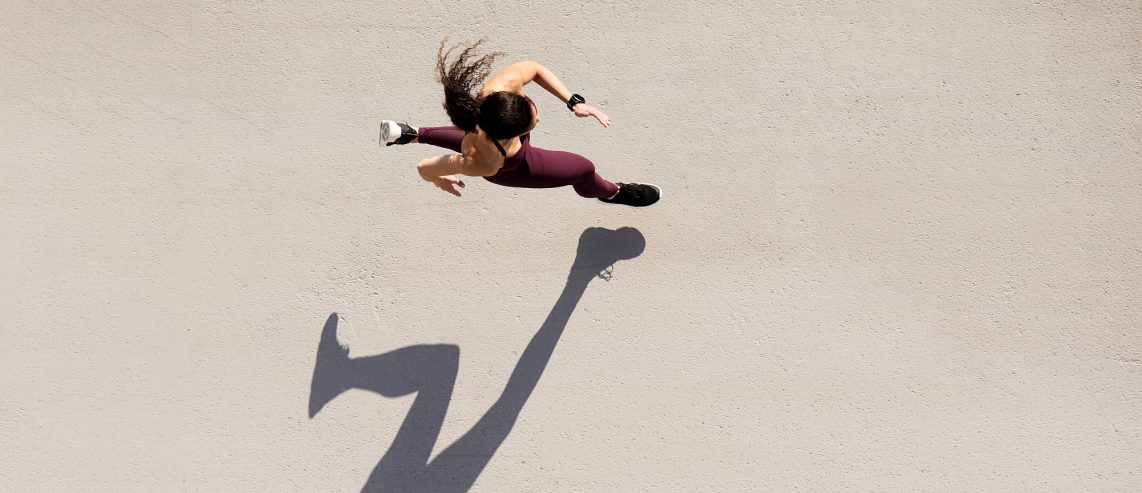Female athletes know they must train specific muscles to excel in their sport of choice. But few think about the pelvic floor muscles when designing their workouts. Now, pelvic health physical therapists say female athletes should pay more attention to these muscles — and not only after childbirth.
Never Miss a Beat!
Subscribe to Our HealthBeat Newsletter!
Thank you for subscribing!
You can now select the specific newsletters you'd like to receive.
You are already subscribed.
Subscribe to more newsletters in our email preference center.
Sorry, an error occurred. Please try again later.
Get Healthy Tips Sent to Your Phone!
What the Pelvic Floor Muscles Do
The muscles of the pelvic floor have three main functions:
- Sexual: Controlling arousal and orgasm.
- Sphincteric: Opening and closing to control your bladder or bowels.
- Support: Working with ligaments to form a “hammock” that suspends your organs and interacts with the muscles of the core, hips, and diaphragm to distribute pressure.
According to Megan Glod, DPT, more people should consider their pelvic floor muscles when exercising. That’s because they’re important to quality of life throughout their lifetime.
“As a pelvic health physical therapist, I typically see women at a few key times in their lives,” says Glod, assistant program director, pelvic health physical therapy, UPMC Rehabilitation Institute. “Most common are women who are trying to get back into exercising after they’ve had a baby or women who are post-menopausal and having symptoms.
“But what might surprise people is that some of my patients are young women ages 12 to 16 who are dancers, cheerleaders, and gymnasts who have never had children, but they’ve experienced pelvic floor dysfunction symptoms, such as urine leakage.”
Studies confirm that female athletes have three times the risk of stress urinary incontinence (SUI) compared to non-exercisers.
For gymnasts and tumblers, the risk is even higher. Years of repeated takeoffs and landings during training multiple times per week appear to take their toll on the pelvic floor muscles. One study of 107 rhythmic gymnasts ages 14 to 15 showed that 32% of them reported urinary incontinence.
Another study of competitive gymnasts and cheerleaders ages 16 and 17 showed that 67% reported symptoms of urinary incontinence. In that study, 41% of the athletes had never even heard of the pelvic floor muscles. But 22% had avoided training sessions or doing specific exercises because of leakage.
Symptoms of Pelvic Floor Dysfunction
Urinary incontinence is just one of the symptoms of pelvic floor dysfunction. Other symptoms include:
- Bowel leakage.
- Dyspareunia (pain with sexual intercourse).
- Episiotomy or C-section scar pain.
- Nocturia (having to urinate during the night).
- Pelvic organ prolapse.
- Pubic pain, back pain, or diastasis recti abdominis (DRA), a separation of the abdominal muscles.
- Straining to urinate.
- Vaginal heaviness or bulge.
DRA is more common after pregnancy than you might think. Roughly 33% of people show signs of this separation of the abdominal muscles at week 21 of pregnancy. About 60% have it at six weeks postpartum. More than 32% will still have it one year postpartum.
DRA is predictive of pelvic floor disorders in women older than 50. So, having DRA evaluated after pregnancy could be important to quality of life post-menopause.
Postpartum Return to Exercise
Health care providers generally recommend waiting until after the postpartum checkup for people to return to normal exercise. But for many athletes, six to eight weeks is not enough.
Athletes who participate in Cross Fit, jogging/running, high-intensity interval training (HIIT), P90X, or other high-impact exercise programs would be well suited to return to sport with a gradual progression of return to exercise over several months. An evaluation by a pelvic health rehab specialist and a treatment plan based on the athlete’s personal goals and issues could help these athletes return to high-impact exercise with less risk of strain on the pelvic floor and core muscles.
“There’s a misconception out there that Kegel exercises will completely prevent problems with the pelvic floor muscles, and they can help – but research shows that more than half of women do Kegels improperly,” Glod says. “In addition, many people have no problem tightening these muscles but cannot relax them, and that’s just as important.”
Preventing Postpartum Pelvic Floor Problems
While learning to do a proper Kegel can help to prevent some pelvic floor issues after childbirth, there are other steps you can take to help. Glod recommends these five steps:
- Address any back pain or pelvic floor symptoms before you even try to get pregnant, if possible.
- Stay active during your pregnancy.
- Listen to your body and don’t push through pain. Report any new-onset symptoms to your doctor.
- Ease back into normal activities and progress slowly with return to exercise.
- Don’t accept pelvic floor muscle issues as a given. Ask your doctor for a referral to a physical therapist who specializes in pelvic health.
“It’s never too late to seek help for pelvic floor issues,” Glod says. “An evaluation by a pelvic health rehab specialist can determine if you would benefit from a therapy plan specific to your impairment and personal goals. We try to keep athletes in their sports or activities, so creating an awareness of the pelvic floor muscles and the importance of pelvic floor exercises could help female athletes avoid or minimize issues down the road.”
About UPMC Rehabilitation Institute
The UPMC Rehabilitation Institute offers inpatient, outpatient, and transitional rehabilitation, as well as outpatient physician services so that care is available to meet the needs of our patients at each phase of the recovery process. Renowned physiatrists from the University of Pittsburgh Department of Physical Medicine and Rehabilitation, as well as highly trained physical, occupational, and speech therapists, provide individualized care in 12 inpatient units within acute care hospitals and over 80 outpatient locations close to home and work.
